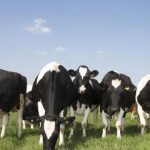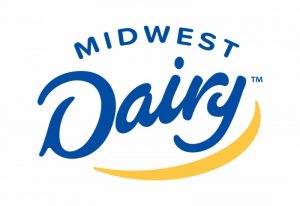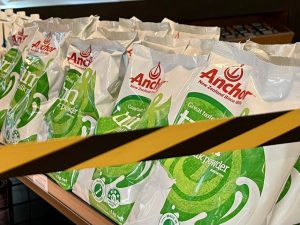
IDFA reports that dairy supports over 3 million jobs nationwide and generates over $41 billion in direct wages. Dairy’s overall impact on the U.S. economy is about $753 billion annually.
Where do dairy exports fit into all of this?
The economic benefit of dairy exports should be the primary reason they are supported and encouraged by farmers and the general citizenry, according to the U.S. Dairy Export Council.
The export portion of the industry directly and indirectly supports 100,000 jobs. For individuals — our friends and neighbors not involved in dairy — the council says that for every $1 of product that goes to our largest customer, Mexico, there is an economic return to the U.S. of $2.50.
(Note: Asian markets are rapidly becoming the largest markets for U.S. dairy exports and have grown the most, by percentage, while Mexico’s share has slightly declined.)
U.S. dairy exports grew by 9% in 2020, even with the COVID pandemic, according to USDA. We haven’t yet returned to the peak level of 2014, but growth has occurred each year for the past four years.
Mexico, Canada and China are our top markets, probably no surprise to any of you, and growth is expected to continue.
What are the implications for Pennsylvania’s dairy industry?
Data about dairy exports from Pennsylvania are somewhat disjointed and do not paint a picture for a consistent time period.
U.S. Trade Representative data from 2017 show industry maintenance for Pennsylvania agriculture, including dairy, has depended on exports.
Pennsylvania ranked 10th among U.S. states in overall foreign exports, 21st in the nation in all agriculture exports and 6th in dairy product exports for the years represented by the data.
The demand for exports has helped head off an industry self-destruction due to oversupply issues. In some states, the number of cows and production are increasing, and pipelines to manufacture products to meet the export market trends have developed.
The only state in the Northeast to increase its number of cows between 2016 and 2020 is New York.
Other areas of the country, Indiana, Iowa, Oklahoma, Texas, Idaho, Wyoming, Colorado, New Mexico, Nevada and Washington, saw increases in number of cows during that period.
The states with overall increases in milk production in our region are Connecticut and New York.
The other U.S. states with increases in production between 2016 and 2020 are Michigan, Wisconsin, Minnesota, Ohio, Indiana, Iowa, South Dakota, Nebraska, Kansas, Oklahoma, Texas, Colorado, Arizona, Utah, Nevada, Washington, Oregon and California.
I apologize for the long lists of states, but I wanted to home in on the point that dairy exports are growing at a fairly rapid pace while traditional markets are holding steady.
The states that are growing their dairy herds and increasing production will likely be the ones to have an advantage as this all plays out. (Also, look at the location of these states — most are not in the eastern part of the country.)
Pennsylvania dairy has an opportunity to grow what is already a fairly good business (or at least was in 2017). What the numbers tell me is that a fairly sizable amount of our dairy production is already being diverted into exports, and we should be able to strategize as a state to increase these numbers. It just might be the salvation of an industry that has been showing yearly declines.
The board supports efforts to thoughtfully grow the dairy industry in Pennsylvania. We believe a model that protects and nurtures our small farms and local dairy markets, coupled with parallel export-focused production and manufacturing, is what is needed. State and local governments can help with these efforts through grants, tax incentives and workforce training.

























